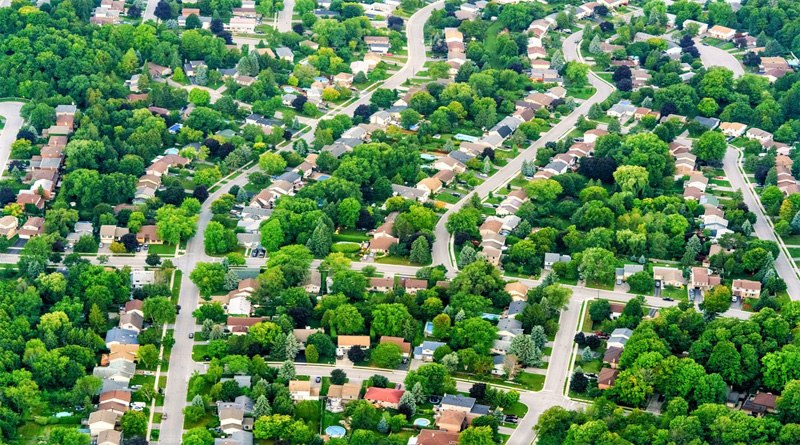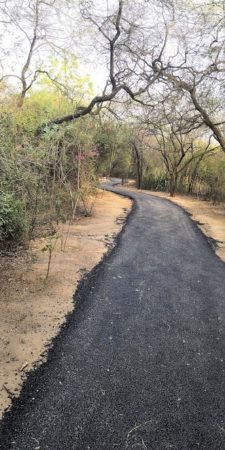Needed. A mindset shift to consider trees as infrastructure

The Swachh Bharat Abhiyan, or the Clean India Mission, when launched by the Prime Minister, Narendra Modi, had its share of detractors. The program, with its laser focus on making the country open defecation free, by providing more toilets has been a qualified success. Like all such massive missions, it will be a few years before the long-term effects are felt. According to the ministry of Housing and Urban Affairs, the nodal ministry for the mission, over 4.6 million individual toilet constructions have been done, and over 300,000 community toilets. Those are amazing numbers, and at the very least, will have already made an impact on the healthcare outcomes in those households and communities. In fact, one of the reasons the move got grudging support from more people was exactly this sort of impact vis a vis our healthcare infrastructure, an area where existing infrastructure has been a big problem. Thus, the Swachh Bharat Abhiyan effectively worked at prevention, to avoid exposure to the creaking healthcare infrastructure. More simply, rather than giving you ever larger amounts of money to find decent doctors, work at ensuring you need the doctor less.
Trees, as the ongoing protests in Delhi against the 16,000 lined up for cutting shows, are finally being valued by the people for their beneficial properties. Especially in the country’s urban areas, where we have seen the most incredibly callous handling of these vital part of our lives. If we want a healthy life, that is.
 You know where this is going, right? It’s time the Prime Minister gave trees their due too, as the best preventive action against our deteriorating environment, be it air, water or noise etc. Consider the facts. Trees clean and cool the air, thereby helping regulate temperatures, fight the new problem of urban heat island effects in concretised cities, besides helping manage water levels and quality too. If that wasn’t enough, throw in a few fruit trees into the mix, and they support entire eco-systems, not to mention being a relief for the eyes while doing all that. But our priorities remain misplaced. Consider the well laid, and freshly carpeted road inside a ‘forest’ in Delhi. This photograph was taken just last week. Where a walking path would have been good enough, money has been wasted on an asphalt road. Money that could well have been spent on creating a more diverse forest, and trees elsewhere. If that isn’t misplaced and foolish priorities, what is? Of course, we all know what will happen. The monsoons will hit this week, a possibly poorly constructed road will be ‘washed’ away, and there goes the horticulture department budget for next year! Not on trees, but on roads no one needs.
You know where this is going, right? It’s time the Prime Minister gave trees their due too, as the best preventive action against our deteriorating environment, be it air, water or noise etc. Consider the facts. Trees clean and cool the air, thereby helping regulate temperatures, fight the new problem of urban heat island effects in concretised cities, besides helping manage water levels and quality too. If that wasn’t enough, throw in a few fruit trees into the mix, and they support entire eco-systems, not to mention being a relief for the eyes while doing all that. But our priorities remain misplaced. Consider the well laid, and freshly carpeted road inside a ‘forest’ in Delhi. This photograph was taken just last week. Where a walking path would have been good enough, money has been wasted on an asphalt road. Money that could well have been spent on creating a more diverse forest, and trees elsewhere. If that isn’t misplaced and foolish priorities, what is? Of course, we all know what will happen. The monsoons will hit this week, a possibly poorly constructed road will be ‘washed’ away, and there goes the horticulture department budget for next year! Not on trees, but on roads no one needs.
For cities in India, where trees have been particularly badly hit, there is a need to relook our whole approach to them. The protests in Delhi at the possible felling of another lot of 16,000 for government housing are hopefully the beginning of a permanent change in attitudes to these precious live and shared heritage between generations. This is particularly true of our cities, as rural areas generally have a better understanding of trees and the value they bring, and their biggest losses come from large projects like dams, highways and more, though one could raise a stink about the record on mandated afforestation there too.
It’s not like city dwellers don’t get it. Even today, consider the automatic premium for an area with trees, versus dry, bereft places. In Delhi, areas near the city’s famed ‘forests’ command a huge premium over other areas in the city. This is simply a system of discrimination both blatant and with a direct impact on the health of most citizens. It’s simply time to remove this privilege of so-called ‘posh’ areas and focus on making trees more evenly distributed. That can happen only if local and state governments both treat trees like a vital infrastructure, a key indicator of an area’s quality officially, so that not only do trees get focused attention, their removal is not treated as callously as it has been done all these years.
So where will the money come from, you might ask? While there are enough studies that provide a lifetime value of a strong, adult tree to the environment, from Rs30,000 to Rs250,000, depending on the study you go with, the fact is that as we all know, ‘investment’ in planting trees is probably never going to be a cost issue. It’s simply a matter of will, and common sense winning over greed. Tough, but more doable than it seems.
copyright:iamrenew.com




